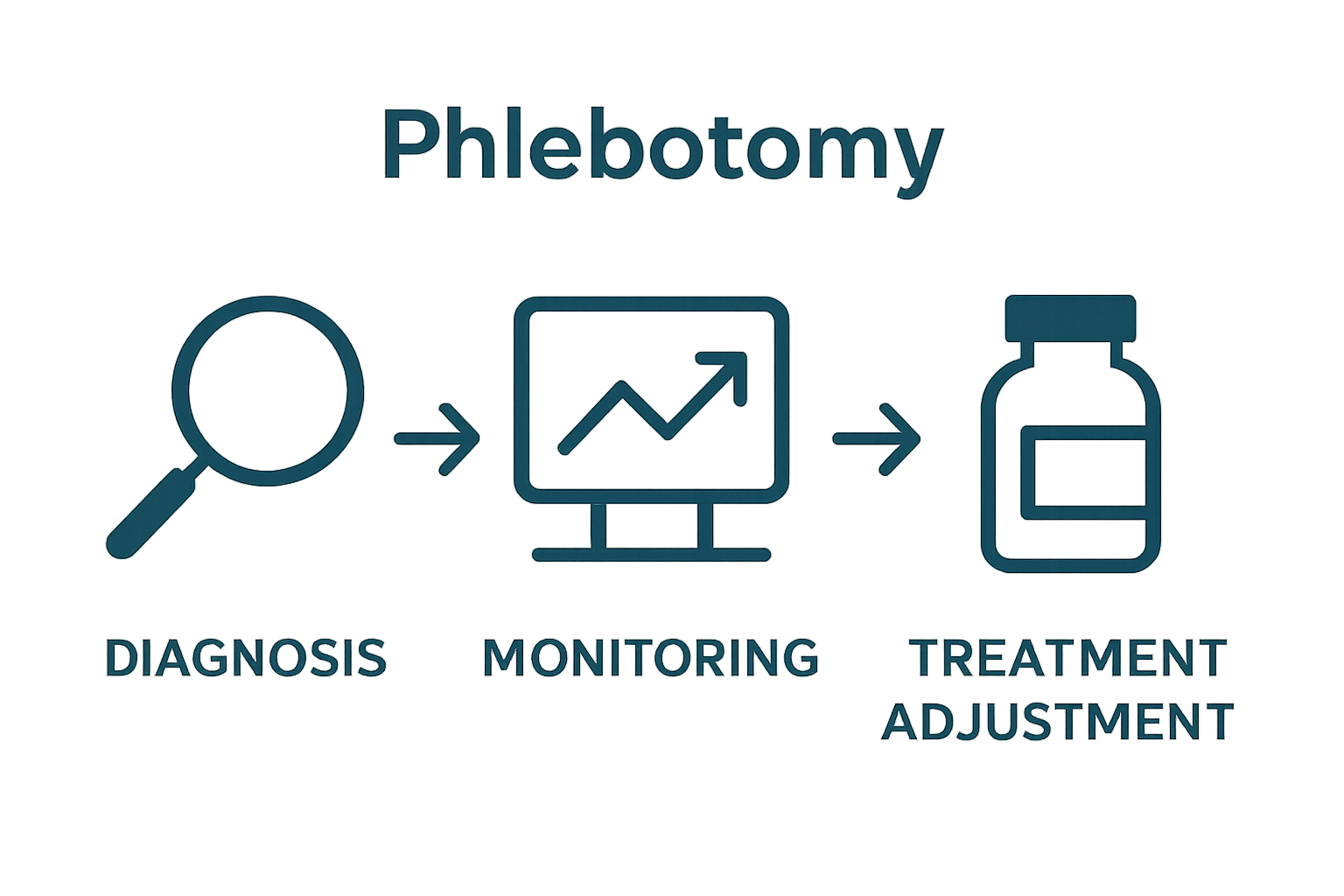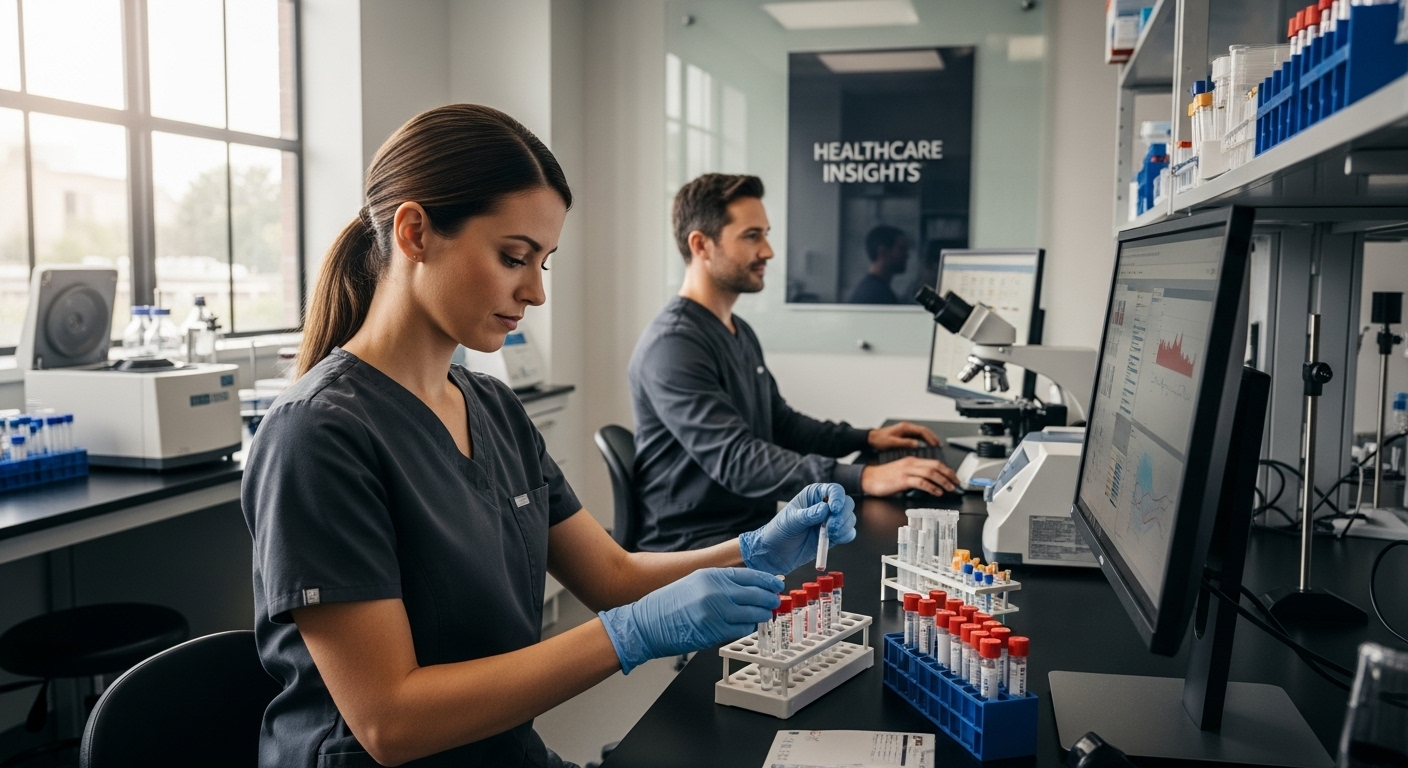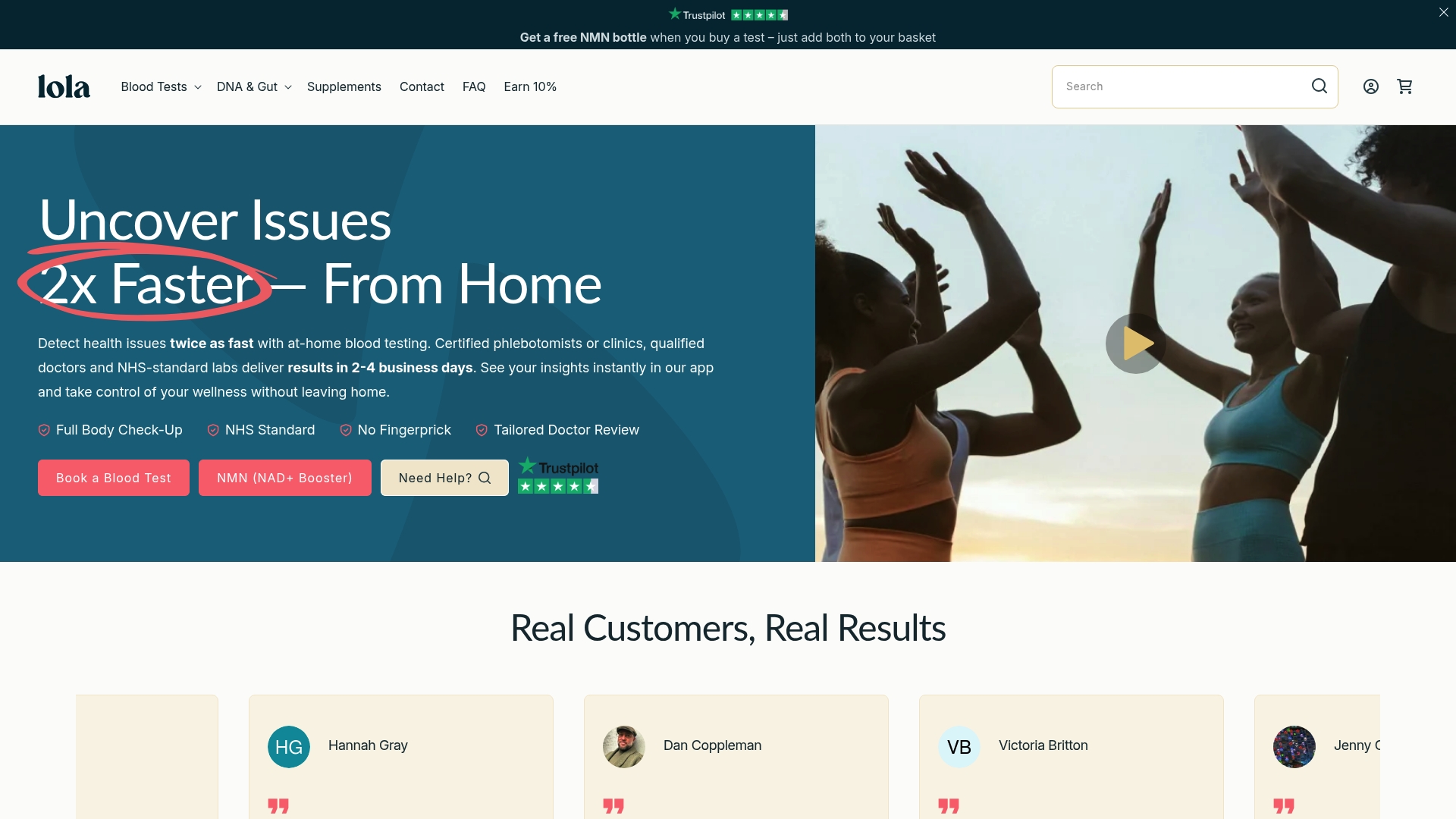A phlebotomy appointment might sound daunting at first, especially if you are not keen on needles and medical procedures. Yet, these visits are brief and highly precise, with the actual blood draw often lasting just a few minutes out of an average 10 to 15 minute appointment. Strange as it seems, what usually surprises most people is not the speed or the pinch from the needle. It is the fact that this simple act unlocks critical health answers doctors cannot get any other way.
Table of Contents
- Understanding The Concept Of Phlebotomy Appointments
- The Importance Of Phlebotomy In Healthcare
- How Phlebotomy Appointments Function
- Key Elements Of A Phlebotomy Appointment
- What To Expect During And After A Phlebotomy Appointment
Quick Summary
| Takeaway | Explanation |
|---|---|
| Phlebotomy is essential for diagnostics. | Blood samples help identify health conditions and monitor ongoing issues, making phlebotomy a core aspect of medical assessments. |
| Hydration improves blood collection. | Staying well-hydrated before your appointment can make veins more visible and facilitate easier blood draw. |
| Understand pre-appointment requirements. | Following specific preparation guidelines, such as avoiding strenuous activities, optimises the blood collection process. |
| Expect a quick and professional procedure. | A typical phlebotomy appointment lasts 10 to 15 minutes, designed to minimize discomfort and ensure patient safety. |
| Minor bruising may occur post-appointment. | After the procedure, some light bruising or tenderness can happen, but these effects are usually temporary and manageable. |
Understanding the Concept of Phlebotomy Appointments
A phlebotomy appointment represents a critical medical procedure focused on the professional collection of blood samples for diagnostic and health monitoring purposes. This specialised medical service involves trained healthcare professionals extracting blood from a patient’s veins using precise techniques and sterile equipment. Understanding what happens during these appointments helps patients feel more comfortable and prepared.
The Fundamental Purpose of Blood Collection
Phlebotomy serves multiple essential healthcare objectives. Blood tests can reveal comprehensive insights into an individual’s overall health status, helping medical professionals diagnose conditions, monitor existing health issues, and assess potential risks. The collected blood samples undergo detailed laboratory analysis, providing crucial data about various physiological systems including:
- Cardiovascular health indicators
- Metabolic functioning
- Hormonal balance
- Immune system performance
- Potential infectious markers
Professional Techniques and Patient Experience
Highly trained phlebotomy professionals follow strict medical protocols to ensure patient safety and sample integrity. During a typical appointment, a certified phlebotomist will carefully select an appropriate vein, typically in the arm, using specialised techniques to minimise discomfort. Learn more about how to prepare for your appointment to ensure a smooth experience.
The entire blood collection process is designed to be quick, typically lasting between 10 to 15 minutes, with minimal invasiveness. Professionals use sterile, single-use needles and follow rigorous hygiene standards to prevent any potential complications. After the blood sample is collected, it is carefully labelled, stored, and transported to specialised laboratories for comprehensive analysis.
The Importance of Phlebotomy in Healthcare
Phlebotomy plays a crucial role in modern healthcare, serving as a fundamental diagnostic tool that enables medical professionals to gain comprehensive insights into a patient’s physiological condition. By extracting and analysing blood samples, healthcare providers can detect, monitor, and manage a wide range of medical conditions with unprecedented precision and effectiveness.

Diagnostic Precision and Early Detection
Blood testing through phlebotomy represents a powerful diagnostic strategy. Healthcare professionals rely on detailed blood analysis to identify potential health risks and underlying conditions before they become more serious. These tests can reveal critical information about various bodily systems, including:
- Potential genetic predispositions
- Early signs of chronic diseases
- Metabolic irregularities
- Nutritional deficiencies
- Hormonal imbalances
Comprehensive Health Monitoring and Personalised Care
Beyond initial diagnosis, phlebotomy enables continuous health tracking and personalised medical interventions. Explore innovative approaches to at-home blood testing that are transforming how individuals engage with their health data.
Regular blood tests allow healthcare providers to:- Track disease progression
- Evaluate treatment effectiveness
- Adjust medication dosages
- Monitor chronic condition management
- Develop targeted health strategies
By providing a detailed snapshot of an individual’s internal biological landscape, phlebotomy empowers both patients and medical professionals to make informed, proactive healthcare decisions.
 The precision and depth of information obtained through blood testing continue to be instrumental in advancing preventative medicine and personalised healthcare approaches.
The precision and depth of information obtained through blood testing continue to be instrumental in advancing preventative medicine and personalised healthcare approaches.
How Phlebotomy Appointments Function
Phlebotomy appointments are meticulously structured medical procedures designed to collect blood samples with maximum precision, safety, and patient comfort. These specialised interactions between healthcare professionals and patients involve several critical stages that ensure accurate diagnostic information is obtained efficiently.
Pre-Appointment Preparation and Patient Readiness
Preparing for a phlebotomy appointment requires careful consideration of several important factors. Patients are often advised to follow specific guidelines to optimise the blood collection process. Key preparatory steps typically include:
- Staying hydrated before the appointment
- Avoiding strenuous physical activity
- Wearing comfortable clothing with easily accessible arm areas
- Bringing relevant medical documentation
- Informing the phlebotomist about any medications or medical conditions
Technical Procedure and Sample Collection
According to NHS guidelines, the actual blood collection process is a carefully orchestrated medical procedure. A certified phlebotomist will systematically execute several precise steps
:
- Select an appropriate venipuncture site
- Clean the area with antiseptic solution
- Apply a tourniquet to make veins more visible
- Insert a sterile needle with minimal discomfort
- Collect specified volumes of blood in appropriately labelled collection tubes
- Apply pressure and a bandage post-collection
The entire process typically requires between 10 to 15 minutes, with the actual blood draw lasting mere moments. Professionals use advanced techniques to minimise patient anxiety and ensure sample integrity, understanding that the quality of collected blood directly impacts subsequent laboratory analysis.
Key Elements of a Phlebotomy Appointment
Phlebotomy appointments are comprehensive medical interactions that extend far beyond the simple act of drawing blood. These carefully structured encounters involve multiple critical components designed to ensure patient safety, diagnostic accuracy, and optimal healthcare outcomes.
Patient Assessment and Medical History Review
Before any blood collection occurs, a thorough patient assessment is crucial. Healthcare professionals conduct detailed preliminary evaluations to understand the patient’s overall health context. This initial consultation typically involves:
- Reviewing existing medical records
- Discussing current health symptoms
- Understanding patient medical history
- Identifying potential risk factors
- Determining specific testing requirements
Technical and Professional Procedural Components
The technical execution of a phlebotomy appointment requires precise professional skills and specialised equipment. Learn more about innovative blood testing approaches that enhance patient experience. Key procedural elements include:
- Selecting appropriate venipuncture sites
- Sterilising collection equipment
- Maintaining strict infection control protocols
- Using correct blood collection techniques
- Ensuring accurate sample labelling
- Managing patient comfort and anxiety
Professional phlebotomists understand that each interaction represents more than a technical procedure. It is a critical healthcare interaction requiring empathy, precision, and comprehensive medical knowledge. The success of subsequent diagnostic processes fundamentally depends on the quality and integrity of blood samples collected during these appointments.
What to Expect During and After a Phlebotomy Appointment
A phlebotomy appointment is a structured medical procedure that requires patient understanding and cooperation. Knowing what transpires during and following the blood collection process can significantly reduce anxiety and ensure a smooth, comfortable experience for individuals undergoing diagnostic testing.
During the Phlebotomy Procedure
Healthcare professionals prioritise patient comfort throughout the blood collection process. Patients can anticipate a carefully managed interaction designed to minimise discomfort and maximise diagnostic accuracy. Key experiences during the appointment include:
- Initial friendly consultation with the phlebotomist
- Explanation of the entire procedure
- Opportunity to ask questions or express concerns
- Positioning in a comfortable seated or reclining position
- Minimal and precise needle insertion
- Brief blood collection process
Post-Appointment Care and Recovery
Explore comprehensive health monitoring strategies that extend beyond the immediate phlebotomy experience. After the blood draw, patients should be prepared for some minor, temporary physiological responses:
- Potential light bruising at the needle insertion site
- Slight tenderness around the puncture area
- Recommendation to stay hydrated
- Brief rest period immediately following the procedure
- Minimal restrictions on normal daily activities
Understanding these elements helps patients approach their phlebotomy appointment with confidence, recognising it as a routine yet essential component of proactive healthcare management. The entire process is designed to be swift, professional, and minimally invasive, ensuring patients can quickly return to their regular activities with valuable diagnostic insights obtained.
Below is a concise overview of the key steps involved in a typical phlebotomy appointment, providing clear expectations for patients regarding what will occur during the process.
| Step | Description |
|---|---|
| Patient Assessment | Review of medical history, current symptoms, and discussion with the phlebotomist. |
| Preparation | Patient is seated comfortably and the arm is positioned appropriately. |
| Site Selection and Cleansing | Appropriate vein is selected and cleaned with antiseptic solution. |
| Tourniquet Application | Tourniquet is applied to enhance vein visibility. |
| Needle Insertion and Blood Draw | Sterile needle is inserted with minimal discomfort and blood is collected. |
| Bandaging and Post-Procedure | Needle is removed, pressure is applied, and a bandage is placed over the site. |
| Sample Labelling and Handling | Blood sample is accurately labelled and sent to the laboratory for analysis. |
Take the Uncertainty Out of Your Next Phlebotomy Appointment
If you have ever felt anxious or unsure about what happens during a phlebotomy appointment, you are not alone. Many people are concerned about the accuracy of their results, the safety of blood collection, and how quickly they can access meaningful health insights. When it comes to routine or diagnostic blood tests, convenience, professionalism, and rapid results are critical to easing worries and building confidence in your care.

At Lola Health, your health comes first. With our certified nurses and NHS-standard, UKAS-accredited laboratories, you receive doctor-reviewed results for 45–70 biomarkers, including cardiovascular, metabolic, immune, and hormonal profiles.
Choose hassle-free home visits or clinic appointments and receive secure, actionable results online in as little as 2–4 business days. If you are ready to experience a phlebotomy appointment that prioritises comfort, accuracy, and speed, order your test today and give yourself the clarity and control you deserve. For more information about preparing for your appointment and our latest at-home testing options, learn more here.Frequently Asked Questions
What is the purpose of a phlebotomy appointment?
A phlebotomy appointment is primarily for the collection of blood samples to help diagnose health conditions, monitor existing health issues, and assess overall health status through detailed laboratory analysis.
How long does a phlebotomy appointment typically take?
A phlebotomy appointment usually lasts between 10 to 15 minutes, with the blood collection process itself taking just a few moments.
What should I do to prepare for my phlebotomy appointment?
To prepare for a phlebotomy appointment, patients should hydrate well, avoid strenuous activities, wear comfortable clothing, and inform the phlebotomist about any medications or medical conditions.
What can I expect during the blood collection process?
During the blood collection, you can expect a brief consultation with the phlebotomist, a clear explanation of the procedure, and minimal discomfort during the needle insertion as well as a quick collection of the blood sample.


